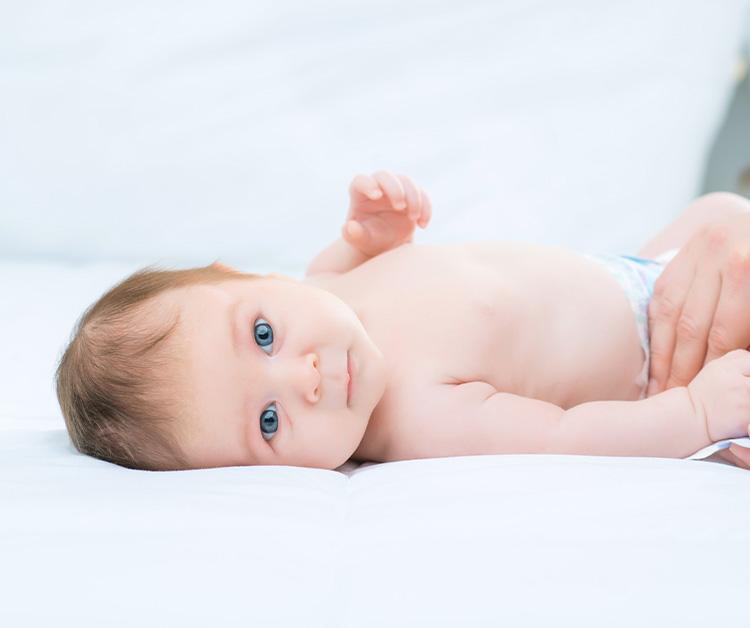Due to maintenance, rewards points for receipt uploads will be delayed. Thank you for your patience!

When you gaze into your newborn's eyes, they may be blue, brown, or gray. But will they stay that way?
That old belief that most babies are born with blue eyes? Totally a myth. In reality, more than half of babies are born with brown eyes[1], while a good number of newborns have blue or gray eyes. Green or hazel eyes are very rare among newborns. But here's the wild thing about baby eye color: It changes. Wondering when babies' eyes change color? Here's a crash course in baby eyes.
No surprise here—eye color is determined by genetics. More specifically, eye color comes down to melanin, the same pigment that gives hair and skin its colors. The more melanin in the iris, the darker its color. Babies with dark brown eyes, for instance, have an abundance of melanin. Babies with light blue eyes have less melanin in their irises.
Although babies with darker skin tones are very likely to have brown eyes, there are exceptions. For example, while blue eyes are usually found among babies with light skin, they can also appear among a smaller number of babies with dark skin.
No matter what color your baby's eyes are at birth, this hue will probably shift over time. That's thanks to melanocytes, the cells responsible for secreting melanin. Melanocytes begin to do their work in utero, helping to determine your baby's skin color and eye color. Some newborns' irises have enough melanin to make them a beautiful brown from day one, but other babies—typically white babies with lower levels of melanin—are born with lighter eyes.
As natural light triggers more melanin production within these melanocytes, light eyes turn darker.[2] This process starts within the first few months of life and usually ends by the time a baby is one year old.
Among very few babies, their irises are different colors. For instance, a baby may have one brown eye and one blue eye. This is due to an unusual eye condition called heterochromia.[3] Similarly, some babies have partial heterochromia, in which a section of the iris is a different color than the rest. The overwhelming majority of the time, this will not cause problems with vision or health—it's just a unique and beautiful feature to admire. Still, in rare cases, it can be a symptom of another condition, so be sure to bring it up to your baby's pediatrician.
Baby eye color is unpredictable, both before birth and during that first year. Your newborn baby's eye color may stay the same—or not. But while you can't predict exactly how your baby's eyes will look, one thing's for certain: You'll love making eye contact with your little one, no matter what their eye color turns out to be.
Do you have more questions about the newest addition to your family? Here’s everything you need to know about your baby’s first year.
All information on Enfamil, including but not limited to information about health, medical conditions, and nutrition, is intended for your general knowledge and is not a substitute for a healthcare professional's medical identification, advice, or management for specific medical conditions. You should seek medical care and consult your doctor or pediatrician for any specific health or nutrition issues. Never disregard professional medical advice or delay seeking medical treatment, care, or help because of information you have read on Enfamil.